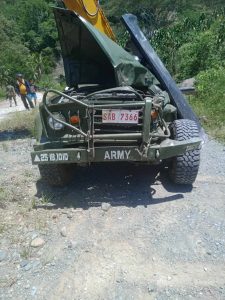THE city government has rolled out its new digital data collection system to widen its reach as well as a mechanism in response to disaster.
Ivan Cortez, City Planning and Development Office in-charge, said the Intelligent Community-based Monitoring System (ICBMS) is a data collection application that captures the actual application of a certain household which is important especially during times of disasters.
Cortez said the ICBMS provides with more accurate and timely data for an effective response during calamities.
The system is helpful to the City Disaster Risk Reduction and Management Office (CDRRMO) and the City Social Welfare and Development Office (CSWDO), he said, citing as an example when a fire incident occurs and residents are gathered in an evacuation center or temporary shelter where CSWDO responds to extend assistance.
“We do not have any information except the data from the purok which are usually not accurate or up to date so we have a difficulty in identifying those residents who are truly affected and those who are not included. With the survey, we will know who the beneficiaries are,” he said during Thursday’s broadcast of the city-owned Davao City Disaster Radio.
Cortez added that it will be easier for the city government to respond using the ICBMS since the actual location, the number of households, and their details will be encoded into the system.
“The household information will be attached to their respective unique geographic location information so that in times of disasters, we will have the correct information as to who is affected,” Cortez said.
According to Cortez, 175 enumerators were hired by the city government to gather information in the 34 high-risk barangays – the pilot areas of the ICBMS.
The data collection will initially focus on the high-risk barangays as identified in the Comprehensive Land Use Plan-City Disaster Risk and Reduction Action (CLUP-CDRRA) Plan. These barangays are Barangay 1-A, 2-A, 5-A, 8-A, 19-B, 21-C, 22-C, 23-C, 27-C, 31-D, Centro, Leon Garcia Sr., Sasa, Tigatto, Waan, Bunawan, Ilang, Lasang, Panacan, Tibungco, Bago Aplaya, Bucana, Catalunan Pequeno, Ma-a, Matina Aplaya, Matina Crossing, Matina Pangi, Talomo, Calinan, Los Amigos, Mintal, Tugbok, Binugao, and Sirawan.
Cortez urged residents of the 34 barangays to cooperate and provide accurate information to the enumerators so they can receive the necessary interventions when a disaster comes.
“Dapat truthful ang ilahang ihatag nga information kay kung dili truthful, dili pud mao ang intervention nga atoang mahatag (They should be truthful in giving information because if they are not, the intervention that we give will not be correct),” he said.
The ICBMS also aims to provide policymakers and program implementers with a regular source of necessary data for diagnosing the extent of poverty at the local level; determining the nature and extent of poverty; formulating appropriate policies and programs; identifying eligible beneficiaries for targeted programs; and assessing the impact of policies and programs.
The data collection is targeted to end in March 2021.




